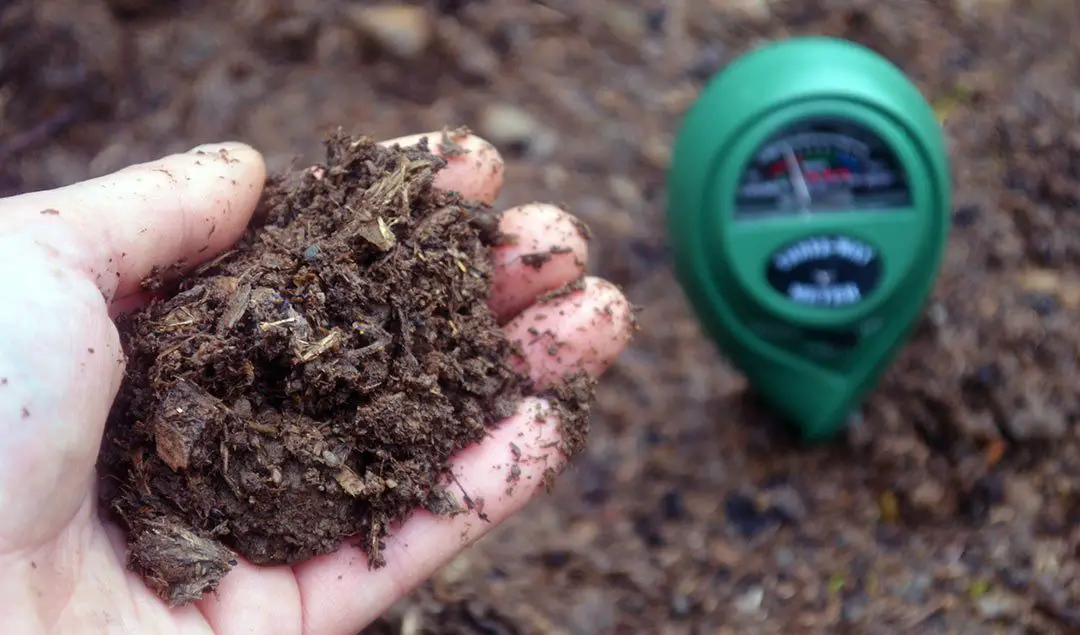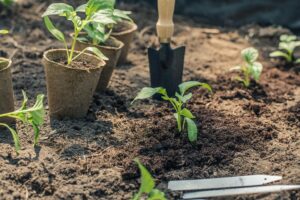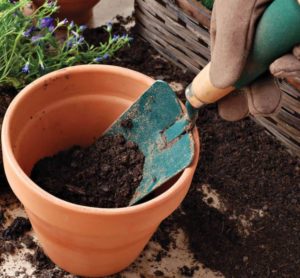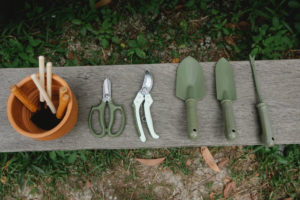What is Soil pH?
Soil pH is the measurement of a soil’s acidity or alkalinity. It is based on a scale of 0 to 14 with zero being the most acidic a substance can be, and 14 the most alkaline or base. A pH rating of 7 is considered neutral. Soil with a pH above 7.0 is considered alkaline, while soil with a pH less than 7.0 is said to be acidic.
There are a number of factors that determine soil pH. Rainfall, soil type, organic matter, soil microorganisms, chemical fertilizers, and seasons all play a role in determining how acidic or alkaline your soil is.
Why It’s Important
Each plant has a preference when it comes to pH levels. If the pH level is too high or too low for a particular plant, the nutrients in the soil will be inaccessible to the roots, causing the plant to weaken and possibly die. Thus, it does not matter how nutrient-dense the soil is, if the pH is off, the roots will have difficulty accessing the necessary nutrients. What you may think is a nutrient deficiency in your soil may actually be a problem with pH. (You may also be interested in my article Soil pH and Why It’s Important.)
This article contains affiliate links. If you make a purchase using one of these links, I will receive a very small commission at no additional cost to you, and it will help me maintain this website. Rest assured, I only recommend products I actually like!
Test Soil pH
Because proper soil pH is important to overall soil health and therefore the health of your plants, it is important to test your soil periodically. It is also a good idea to test nitrogen (N), phosphorus (P), and potassium (K) at the same time, especially considering that some methods for correcting pH may also alter nutrient levels.

Thankfully, there are soil test kits like the one I use that can test the soil pH as well as the NPK levels. (You can learn more about fertilizer and NPK in this helpful article.) Or, if you just want to check the pH you can use a soil meter. Both are quick, easy, and convenient to use, and the results are available in a matter of minutes. Alternatively, your local county extension office should offer soil testing. Although it will require you to send in a soil sample and you may have to wait up to several weeks for the results, it will be more comprehensive.
How to Raise Soil pH (Make it More Alkaline)
Some plants, like azaleas and blueberries, require an acidic environment in order to thrive. But the same environment can be harmful to other plants. (You can find a chart with the preferred pH level of sixty vegetables and herbs at the end of this article.) If the test results reveal that your soil is too acidic for the type of plant you want to grow, you will need to raise the pH, that is, make it more alkaline.
Here are four organic methods for raising soil pH. Regardless of the method you choose, it is important to proceed with care so that you do not overcorrect the problem.
1. Garden Lime, also known as agricultural lime, is made from calcium carbonate. It is a very common way to raise the pH level in your garden. It is available in a powdered form which makes it faster acting. However, the pelletized or granular form makes it easier and safer to apply because there is less dust. Be sure to look at the list of ingredients on the package as some garden lime is mixed with other amendments that you may or may not want to use. Down to Earth’s brand of organic garden lime is a good choice if you want only calcium carbonate and related calcium. Do not use builders’ lime or quicklime as they will burn your plants.
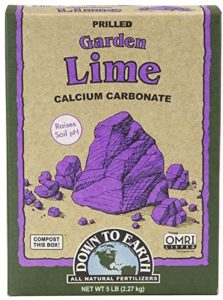
Lime can take several months to break down in the soil. For this reason, many add it to the garden in the fall so that it will have time to be absorbed before spring arrives. You can speed up the process a bit by thoroughly mixing it into the top several inches of soil. Be sure to follow package directions as too much lime can harm your plants and also cause the pH to be too alkaline. For example, when soil is too alkaline, plants will not be able to access the iron in the soil resulting in chlorosis, a condition that is characterized by leaf tissue that turns yellow while the leaf veins remain green. If not corrected, the plant will die.
2. Dolomite or dolomite lime is another possible option for raising the pH level. It is a type of limestone compound that includes calcium and magnesium. Because it is not a pure liming agent like calcium carbonate (above), it will not be quite as effective.
Certain plants, like tomatoes, need extra calcium to prevent blossom end rot which often occurs in soil that is too acidic. Some tomato gardeners use dolomite to bring the pH to a more conducive level while adding calcium to the soil. If, however, your soil has sufficient magnesium, adding dolomite could cause the levels to go too, high. Again, it is important to test the soil before adding any amendments, including dolomite.
3. Wood ash, which is sometimes used to repel snails and slugs, can also be used to raise soil pH. It is a good source of lime and will act quicker than either garden lime or dolomite, however, it does not last as long. Wood ash is also considered a good source of potassium and contains smaller amounts of phosphorus and trace minerals. Therefore, you will need to check potassium and phosphorus levels in the soil before adding so as not to over-saturate the soil with these nutrients.

Some recommend adding wood ash in moderation to the compost pile before applying it to your garden because it can produce lye and salt if it gets wet. Composting allows the lye and salt to leach out. While lye and salt are not a problem in smaller quantities, larger quantities can burn your plants. What’s more, high amounts of this alkaline substance can restrict nutrients like iron. Another good reason to consider adding it to the compost pile before using.
Do not use ash from trees or wood that has been chemically treated, painted, or stained. Also, do not use charcoal ash from grills as it can have chemical residue which could be harmful for you and your plants.
Note: Liming agents like the three that we have just reviewed can cause skin, eye, and lung irritation if used in a powder form. Therefore, it is important to wear protective gear when applying.
4. Baking soda or sodium bicarbonate is another method for raising soil pH. Like wood ash, it works quicker than garden lime and dolomite, in as little as a few days. The downside is that it is not long-lasting. Some recommend mixing one tablespoon of baking soda into a gallon of water and applying every few months as needed. Be careful though, it may inexpensive and easy to apply, but too much too soon can cause roots to experience osmotic shock, which occurs when there is a sudden change in salt concentration.
Maintain Soil pH
One way to avoid the need to adjust soil pH is to maintain soil stability. This is achieved by adding mature compost to your garden. Completely decomposed compost will add vital nutrients back into the soil that have been absorbed by the plants or leached out by heavy rains or overwatering, especially in container gardens.
Thank you for reading this article! If you found it helpful, please consider sharing it with others via email or social media!
